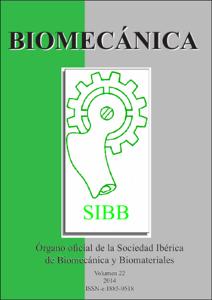Blocking methods to prevent non-specific adhesion of mesenchymal stem cells to titanium and evaluate the efficiency of surface functionalization: albumin vs poly(ethylene glycol) coating
DOI:
https://doi.org/10.5821/sibb.22.1.4802Paraules clau:
BSA, PEG, surface functionalization, cell adhesion, anti-foulingResum
Surface modification of biocompatible materials with biologically-active molecules is a well-known strategy to enhance the osteointegration of implantable devices. In order to evaluate the efficiency of these treatments, an in vitro study of cell behavior on the modified surface is usually carried out. A key point to evaluate the efficacy of this strategy is to avoid non specific protein adsorption by creating a non-fouling background. This blocking step ensures that the observed response of cells can be exclusively ascribed to the modification treatment applied. Several techniques are available to create this neutral background. Thus, the aim of this study is to compare two different blocking methods, namely adsorption of albumin from bovine serum (BSA) and grafting of small polyethylene glycol (PEG) chains to titanium, which is the gold standard metal for orthopedics and dentistry. To this end, titanium surfaces were coated with a recently synthesized cell adhesive peptide-based molecule and subjected to a blocking procedure with either BSA or PEG. Non-functionalized titanium samples were also blocked and used as controls. The biological response of human mesenchymal stem cells was evaluated by measuring the number of attached cells and studying the degree of cell spreading on the substrate. Both aspects of cell behavior are not affected significantly by the blocking method: cells adhere and spread significantly more on the functionalized samples, regardless of the blocking method used. This confirms that the surface feature that defines cell response is the presence/absence of the biomolecule, and not the anti-fouling layer. These results, together with the reduction of variability of results observed in presence of a blocking layer, demonstrate the efficacy and necessity of blocking the surface. PEG grafting is demonstrated as effective as BSA coating in reducing non-specific interactions and not hindering the effect of the biomolecule. However, taken into account the numerous advantages of a synthetic and customizable polymer chain over a complex natural protein, PEG blocking stands out as a very good alternative to albumin adsorption.








